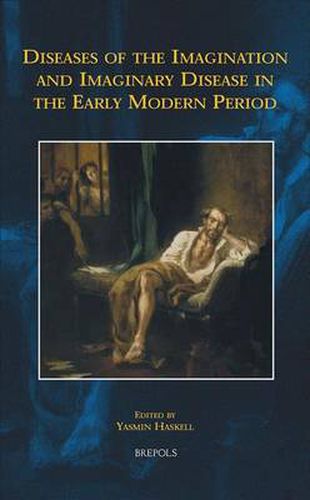Readings Newsletter
Become a Readings Member to make your shopping experience even easier.
Sign in or sign up for free!
You’re not far away from qualifying for FREE standard shipping within Australia
You’ve qualified for FREE standard shipping within Australia
The cart is loading…






The early modern period was arguably the greatest ‘age of the imagination’ in Europe, and certainly the period in which the powers attributed to that faculty had the greatest consequences - both in theory and in ordinary people’s lives. Theologians and physicians debated the reality of witchcraft (no simple battle between Religion and Science, as believers and doubters could be found on both sides); the existence and pathology of werewolves and vampires; the role of the imagination in influencing the unborn child and in causing disease even in remote others. The imagination was implicated in conditions from plague, lovesickness, and anger through to hysteric and hypochondriac disease - the latter a frightening syndrome of gastric, respiratory, cardiac, and psychiatric problems believed to be epidemic. The essays in this volume, by established and emerging scholars from diverse intellectual and cultural traditions, explore Latin and vernacular, philosophical, medical, poetic, dramatic, epistolary, and juridical sources to expose the tangled conceptual roots of our modern affective, anxiety and somatoform disorders. They confirm that controversies about ‘mad’ versus ‘bad’, ‘real’ versus ‘psychosomatic’ complaints, and the interdependence of perception, emotion, and physical illness are by no means a monopoly of our times.
$9.00 standard shipping within Australia
FREE standard shipping within Australia for orders over $100.00
Express & International shipping calculated at checkout
The early modern period was arguably the greatest ‘age of the imagination’ in Europe, and certainly the period in which the powers attributed to that faculty had the greatest consequences - both in theory and in ordinary people’s lives. Theologians and physicians debated the reality of witchcraft (no simple battle between Religion and Science, as believers and doubters could be found on both sides); the existence and pathology of werewolves and vampires; the role of the imagination in influencing the unborn child and in causing disease even in remote others. The imagination was implicated in conditions from plague, lovesickness, and anger through to hysteric and hypochondriac disease - the latter a frightening syndrome of gastric, respiratory, cardiac, and psychiatric problems believed to be epidemic. The essays in this volume, by established and emerging scholars from diverse intellectual and cultural traditions, explore Latin and vernacular, philosophical, medical, poetic, dramatic, epistolary, and juridical sources to expose the tangled conceptual roots of our modern affective, anxiety and somatoform disorders. They confirm that controversies about ‘mad’ versus ‘bad’, ‘real’ versus ‘psychosomatic’ complaints, and the interdependence of perception, emotion, and physical illness are by no means a monopoly of our times.